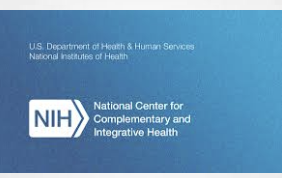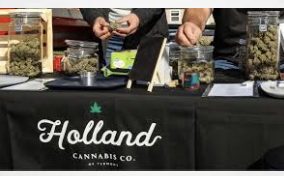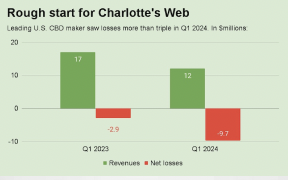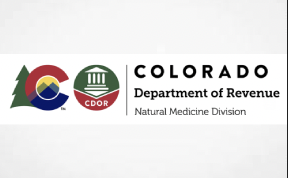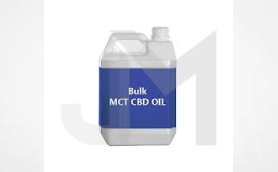Written by Dr Daniel Couch
Introduction
The evidence base for the clinical utility of medicinal cannabis is becoming clearer. Since the 1980s a growing preclinical field of science has been evaluating the therapeutic potential of cannabis in multiple physiological systems and diseases.(1) More recently, these data have been translated through a number of clinical trials demonstrating the efficacy of cannabis-based medicines for specific diseases. This has culminated in the recent recommendation by the National Centre for Health and Care Excellence (NICE) that cannabis-based medicinal products should be funded by the NHS for three out of four conditions evaluated.(2) An increasingly vocal patient user base, growing interest from clinical academics and institutions,(3) and a maturing pharmaceutical sector are evidence that the medical use of cannabis is set to change clinical practice in the next decade. It is very likely that, together, these developments will elicit further public policy deliberations surrounding the regulation of such medicines.
A key driver of any future policy change will be the need to prevent widespread illegal medical use of “street” cannabis. Previous reports have estimated that between 50,000 and 1.1 million people in the UK are already using cannabis in this way,(4) rather than for recreational purposes. However, such assessments may be unreliable and open to observational, selection and reporting bias. The absence of verifiable data may have prevented the inclusion of this issue in public policy considerations. However, to advocate for a new policy direction to extend access to cannabis-based medicine it is vital to know the number of people in Britain obtaining cannabis and using it to relieve the symptoms of a medically diagnosed disease. In this study, we used a cross-sectional national survey weighted to all adult groups in England, Wales and Scotland to identify this prevalence, and also to scale the monetary and personal costs of use.
Methodology
This was a prospective survey of adults (over 18 years old) resident in Britain, conducted by YouGov (yougov.co.uk). It comprised an online interview administered to members of a YouGov plc UK panel of over 800,000 individuals who had previously agreed to take part in surveys. Emails were sent to panellists selected at random from the base sample, inviting them to take part in a survey and providing a generic survey link. Once a panel member clicked on the link, they were directed to the survey. Invitations to surveys did not expire and respondents could be sent to any available survey being conducted at that time by YouGov. The responding sample was weighted to generate a sample representative of the adult population of Britain. This profile was derived from census data. In this case, we sought a sample of respondents weighted to be representative of the entire adult population of Britain, rather than, for example, “adults over 55 years in Britain”.
Demographic details of respondents were retrieved from previous surveys or from data declared by those signing up to the bank of individuals consenting to take part in YouGov surveys. All questions were treated anonymously, and the data held on a secure server compliant with General Data Protection regulations. At all stages, respondents were reminded that their answers were confidential but could be reported in general literature in a “blinded” format. Respondents also had the option to answer “prefer not to say” to any question at any time.
Demographic data recorded included age, gender, social class, geographical region, government region, working status, marital status, number of children in the household, parent or guardian status, and use of social media or messaging services in the last month. A five-point questionnaire was designed to estimate the prevalence of use of cannabis as a medicine in Britain.
Results
Between 23 and 30 October 2019, 10,602 adults were polled and responded in five waves of online surveys. The demographic data of respondents was representative of the general population in Britain and is displayed in Figure 1. Of the respondents, 5460 (51.5%) were female. Their age profile was as follows: 1177 (11.1%) were aged 18–24, 1657 (15.6%) were aged 25–34, 1831 (17.3%) were aged 35–44, 1768 (16.7%) were aged 45–54 and 4169 (39.3%) were over 55. A total of 6043 (57%) were from social classes A, B and C1.
Question One – Medical diagnoses in the general population
Respondents were asked:
Which, if any, of the following health conditions have you been diagnosed with officially by a medical professional (e.g. a doctor, nurse etc.) as currently having? (Please select all that apply).
Of the 10,602 respondents, 4916 selected one or more medical diagnoses from the options provided, 4704 selected “none of these”, 178 selected “don’t know/can’t recall” and 864 selected “prefer not to say”. Diagnoses selected are displayed in Figure 1. Relative nationwide prevalences of all selected diagnoses in the UK were calculated for study validation; the figures are given in Table 1.
Question Two – Use of cannabis as a medicine
Respondents were asked:
For the following questions, when answering the question, please think only about the plant product cannabis (also known as marijuana) that you are not able to obtain from a GP. Please do not include cannabis derived products (like Cannabidiol or CBD) that you can legally obtain on the high street or Internet. Thinking only about any use of cannabis to specifically manage your conditions mentioned in the previous question, or to treat any symptoms or side effects brought on by your prescribed treatment, please do not include using cannabis recreationally or for any other purpose. Do you currently use cannabis to help manage or treat any symptoms of your condition or side effects of its treatment?
Of the 4916 participants who had stated that they had a medical condition, 281 responded that they currently used cannabis to help manage or treat symptoms of their conditions or side effects brought on by treatment; 4546 stated that they did not, and 89 selected “prefer not to say”. The demographic data of those using cannabis in this way are given in Figure 2. Secondary demographic household data is given in Figure 3.
From this data we calculated the approximate prevalence of use within the medical population for any given disease, and also among the general adult population in Britain. This data is given in Table 2.
Question Three – Frequency of use
Respondents were asked:
Approximately, how often do you tend to use cannabis for this purpose? (Please select the option that comes closest)
Of the 281 respondents declaring that they used cannabis as a medicine, 157 reported using it on a daily basis, 66 on a weekly basis, 24 on a monthly basis, 22 less than monthly, 9 answered “don’t know” and 3 chose “prefer not to say” (Figure 4A). Frequency of use was calculated per condition (see Figure 4C). For 12 out of the 23 diseases, 50% or more of respondents reported cannabis use on a daily basis for the relief of symptoms or side effects of treatment, although in only 3 disease groups (depression, chronic pain and anxiety) was the count per group greater than 50 respondents. Those from social classes C2DE were more likely to use cannabis on a daily basis than those from classes ABC1 (Figure 4B).
Question Four – Expenditure on cannabis
Respondents were asked:
Approximately, how much money would you say you personally spend on cannabis to manage or treat some symptoms or side effects brought on by the treatment of your condition, in an average month?
Of the 281 respondents declaring cannabis use, 25 reported spending nothing per month to acquire it, 123 spent £1 to £99, 58 spent £100 to £199, 31 spent £200 to £299, 17 spent £300 to £399, 13 spent £400 or above, 8 answered “don’t know” and 7 answered “prefer not to say” (Figure 5A). Expenditure on cannabis varied across geographic regions (p < 0.0001) and per condition (Figures 5B & 5C). Of all conditions, the highest mean expenditure per month was for Parkinson’s disease (£357 per month, SEM £52.80), whilst the lowest was for arthritis (£143 per month, SEM £22.70). Respondents most frequently described using cannabis for depression and anxiety (134 and 120 respondents respectively); for these conditions, monthly expenditure was £162 (SEM £8.60) and £167.30 (SEM £9.50) respectively.
Question Five – Effects of purchasing cannabis illegally
Respondents were asked:
For the following question, please only think about the act of taking and/or purchasing cannabis as opposed to the physical feeling that cannabis induces. Please describe how it makes you feel to manage or treat some symptoms or side effects brought on by the treatment of your medical condition with cannabis that you are not able to obtain from your GP.
Of the 281 respondents declaring cannabis use, 158 gave a response. Although responses varied widely, 34 were dissatisfied with engaging in illegal activity to obtain cannabis for medical use, 26 expressed frustration at government policy towards medicinal cannabis, 8 raised concerns over product quality, 7 stated that they would prefer a prescription for their product from their GP, 6 stated that the cost was high and 2 stated that they were unhappy about an inconsistent supply. This is summarised in Figure 6.
Post-survey feedback
No respondents replying to the survey opted to give feedback to any question in the study. None of the respondents opted to contact the survey hosts with concerns about the study or requiring further support.
Discussion
Cannabis has been used for symptomatic relief from disease for centuries. However, unless prescribed, possession or supply of cannabis in the UK is illegal under the Misuse of Drugs Act.(6) In the early 1960s, the casual use of street cannabis began to be reported amongst recreational users suffering from other medically diagnosed diseases. This has more recently been bolstered by observational or laboratory data from a steadily growing body of preclinical and clinical evidence demonstrating that cannabis or its major constituents Δ9tetrahydrocannabiol (THC) and cannabidiol (CBD) can induce biological effects in humans to the relief of a number of diseases.(7-9) In response to these observations, a pharmaceutical industry has developed, in addition to multiple academic bodies and initiatives to better understand the therapeutic potential of these compounds.
A recent change in UK prescribing legislation now allows clinicians to prescribe cannabis-based medicinal products in an off-licence fashion when certain conditions are met. Over the past year, this in turn has led to the prescribing of such medicines in a collection of cases, some high profile and well publicised. However, the gateway to widespread prescribing in the UK is endorsement of cannabis-based medicines by the National Institute of Health and Care Excellence (NICE). Last month, NICE made recommendations supporting the use of two cannabis-based medicines for certain conditions,(2) for the first time bringing promise that further cannabis-based medicines will be ratified when appropriate evidence emerges. The timescale for the emergence of such evidence may indeed be slow. There currently exists inadequate data on the safety, efficacy, cost-effectiveness and side effect profiles of these medicines to allow any further recommendation from NICE, NHS England or any other regulatory body to justify any changes to currently published prescribing guidelines. In the absence of such data, we cannot expect these recommendations to be relaxed in the near future.
However, for many patients using cannabis in this way the pace of change remains frustratingly slow. As most patients will not be able to obtain a prescription for a cannabis-based medicinal product (the overwhelming majority of prescriptions have been in
the private sector rather than the NHS), it is clear that a great number of patients in Britain turn to recreationally available cannabis for its therapeutic effects. Should it be the case that a significant proportion of the UK population currently obtain symptomatic relief through illegal activity, with exposure to poor manufacturing practices and entry into potentially dangerous “backstreet” environments, we may argue that a rapid change should be sought in medical cannabis policy.
The purpose of this study was therefore for the first time to accurately gauge the prevalence of cannabis use for symptomatic relief in Britain. We sought to exclude those using cannabis recreationally, highlighting only those with a formal medical diagnosis, reducing reporting and selection bias as far as feasible. In contrast to previous reports,(4) our data suggest that total prevalence is likely to be above 1.4 million people. Our secondary endpoints also suggest that people who use cannabis in this way are from all age groups, geographic locations, social classes and family groups, and both genders, with many spending over £100 per month on their symptomatic relief. Lastly, we found that users of cannabis for symptomatic relief would prefer a prescription from their regular medical practitioner rather than illegal sourcing.
Over 2% of the UK population are self-prescribing a medicine in the absence of oversight from a qualified clinician. A cohort of patients of this magnitude and demographic throws current policy into perspective as this group are, through desperation, self-exposing to several dangers. Firstly, we have a limited understanding of the side effect profile of cannabinoid medicines, and how they may interact with other medications. In routine clinical practice there is a well-rehearsed system of “yellow card” reporting of such side effects and interactions between medications, meaning that unexpected effects from pharmaceuticals are quickly broadcast between clinicians, limiting harm to the wider patient community. A proportion of patients using cannabis to treat their symptoms will do so in addition to their prescribed medication; as such, deleterious interactions may go unrecorded. Secondly, if patients in this group are managing their own symptoms with cannabis, the emergence of new medical problems alongside their existing diagnosis may not be spotted early by a doctor, delaying clinical assessment and treatment. Lastly, patients are unwillingly placing themselves in an environment where they are vulnerable to the practices of “backstreet” manufacturing processes, obscure distributors and illegal suppliers who are not subject to any moral, ethical or institutional regulation. Although not formally qualified in a previous report, patients are currently exposed to variable active pharmaceutical ingredients, contamination from other substances and a highly inconsistent medicine. We found that respondents were concerned about such illegal activity, quality and supply chains, and would prefer more transparency and regulation when obtaining their medicine.
On a national scale the loss of such data is harmful. At present there are a limited number of appropriately sized clinical trials assessing the therapeutic value of cannabis-based medicines; this was reflected recently in the calls from NICE and the National Institute for Health Research for focussed research. Inclusion of patients in observational programmes such as the recently established National Cannabis Registry(10) does generate and report essential information on the impact of cannabis-based medicines for patients and caregivers in a multidimensional format, albeit without the value of awaited phase 3 or 4 randomised controlled trials. At present above 1.4 million data points are simply lost.
Collectively, these risks demonstrate the need for rapid re-evaluation of the regulation and prescribing of cannabis-based medicines. The Medicines and Healthcare Products Regulatory Agency and NICE currently hold the development of licensing and prescribing recommendations for cannabis-based medicines to the same standard as any other novel medicine: the independent assessment of high-quality large-scale randomised controlled data in conjunction with economic assessments of a drug in relation to the quality of life of a patient versus cost to healthcare providers. Recently, Epidiolex and Nabilone were recommended for prescription in specific diseases under specific conditions by NICE within this framework. However, other authors have argued that this route of assessment may not be appropriate for cannabis-based medicines, as there are wider costs and benefits to caregivers which are not currently included in the classical assessment of novel medicines.(11) The data in this report demonstrate the “hidden” personal, moral and societal costs of using “street” cannabis, which are currently not considered by novel drug assessments. On this basis we argue that an alternative or additional method of appraisal should be considered. The mantra of “do no harm” in contemporary assessments should absolutely persist when assessing the safety of a novel agent. In the case of medical cannabis, however, since it is already in widespread use, perhaps an additional mantra of “reducing overall population risk” should be incorporated into the assessment for a more balanced appraisal.
This study is unique because of its cross-sectional nature and attempts to reduce potential reporting and selection bias, in contrast to previous studies which obtained data from self-selecting patients and cohorts. Despite this, several sources of bias in our reporting do exist. Firstly, we have assumed that respondents were reflective of the adult British population, based on census data from 2018. We have also assumed that respondents have answered truthfully and completely. On this basis, the true prevalence of medical cannabis use may be higher or lower than our estimated values: respondents may have been unwilling to declare illegal activity, or they may be already using cannabis for recreational purposes, so that any reduction in symptoms from concurrent disease may be incidental or insignificant. In addition, the prevalence of use does not necessarily equate to therapeutic value in medicinal cannabis. It is possible that although respondents declared medical cannabis use for symptomatic relief, they may not indeed have the disease in question, misunderstanding either the survey’s intent or the diagnosis from their doctor. Even if the diagnostic rates found in this study are accurate, use of cannabis may not have actually reduced the symptomatic rates or overall burden of disease. Further investigation will seek to identify the relationship between recreational uptake and symptomatic relief and closely delineate the prevalence of the two. Lastly, as is the nature of an email-based Internet survey, our data may be biased towards those who are Internet-literate, excluding the proportion of the population who are not, hence misrepresenting national prevalences. These potential sources of bias could have been dismissed or confirmed by a validation exercise, which this study has not undertaken.
In conclusion, we have for the first time produced a reliable estimate of the proportion of the population obtaining and using cannabis for symptomatic relief of a medically diagnosed condition in England, Wales and Scotland. Both the monetary and ethical costs to these individuals are high; this calls for a reassessment of the method and pace of evaluation of cannabis-based medicines.
References
- Pertwee, R.G., 2006. Cannabinoid pharmacology: the first 66 years. British Journal of Pharmacology, 147(S1), pp.S163–S171
- Cannabis-based medicinal products, NICE guideline [NG144], National Institute for Health and Care Excellence, November 2019. https://www.nice.org.uk/guidance/ng144
- Are cannabis-based products effective for medicinal use? National Institute for Health Research, October 2018.
https://www.nihr.ac.uk/news/are-cannabis-based-products-effective-for-medicinal-use/10937 - United Patient Alliance Survey 2018. United Patient Alliance
https://www.upalliance.org/patient-survey-2018 - United Kingdom population mid-year estimates. Office for National Statistics. June 2019. https://www.ons.gov.uk/peoplepopulationandcommunity/populationandmigration/populationestimates/time series/ukpop/pop
- Misuse of Drugs Act (Amendment) 2018. Legislation.gov.uk November 2018.
http://www.legislation.gov.uk/uksi/2018/1055/made - Lynch, M.E. & Campbell, F. Cannabinoids for treatment of chronic non-cancer pain; a systematic review of randomized trials. British Journal of Clinical Pharmacology, 2011 Nov;72(5):735–744.
- Lim, K., See, Y.M. & Lee, J. A systematic review of the effectiveness of medical cannabis for psychiatric, movement and neurodegenerative disorders. Clinical Psychopharmacology and Neuroscience. 2017 Nov;15(4):301.
- Hill, K.P. Medical marijuana for treatment of chronic pain and other medical and psychiatric problems: a clinical review. Jama. 2015 Jun 23;313(24):2474–2483.
- National Registry. Sapphire Clinics 2019.
https://www.sapphireclinics.com/national-registry/ - Sodergren, M. & Erridge, S. Revisiting the remit of the NICE review. Are we asking the right questions? Centre for Medicinal Cannabis, October 2019. London, UK.
https://www.thecmcuk.org/revisiting-the-remit-of-the-nice-review
Tables and figures
Table 1: Medical diagnoses declared by respondents in a national survey of 10,602 adults with projected nationwide prevalences of disease per diagnosis with 95% confidence interval. (IBD = inflammatory bowel disease, PTSD = post-traumatic stress disorder).
Table 2: Number of respondents in a national survey with a medical diagnosis declaring use of cannabis to relieve symptoms or side effects from a prescribed treatment, expressed
by overall medical cannabis use with projected prevalence of nationwide use per condition. (IBD = inflammatory bowel disease, PTSD= post-traumatic stress disorder).
Figure 2: A: Respondents to a national survey with a medical diagnosis when questioned on the use of cannabis to relieve their symptoms. Demographic distributions of respondents to a national survey declaring use of cannabis for relief of symptoms of the diagnosed disease or side effects from medically prescribed treatment, expressed by B: gender, C: age group, D: social class, and E: geographic distribution. Figures are given by count unless specified.
Figure 3: Demographic distributions of respondents to a national survey declaring use of cannabis for relief of symptoms of diagnosed disease or side effects from medically prescribed treatment for disease expressed by A: working status, B: marital status, C: number of children in household, D: parental status, and E: recent use of social media. Figures are given by count unless specified. PNTS = prefer not to say.
Figure 4: Frequency of use of cannabis for symptomatic relief or relief from side effects of medical treatment declared by respondents to a national survey, expressed as A: overall use, B: use distributed across social class, and C: use by medical condition. Figures are given by count unless otherwise specified. (PTSD = post-traumatic stress disorder).
Figure 5: Expenditure on cannabis by respondents to a national survey declaring cannabis use for a medically diagnosed disease or side effects of medically prescribed treatment, expressed by A: Overall expenditure per month, B: Mean spend per month by geographic location, and C: mean expenditure per month by disease.
Figure 6: Responses from respondents to a national survey declaring cannabis use for a medically diagnosed disease or side effects of medically prescribed treatment when questioned on the act of acquiring cannabis for their condition, grouped by qualitative answer. Values are given by number of respondents.








